
Film By Erika Suderburg
Music By Eleonor Sandresky
1:31 2015
Preview Clips can be found on Vimeo.com
Available in Versions 1.0, 2.0 or 3.0*
Wunderkammern: The Secret Life of Objects examines acquisition, objects and what a contemporary Wunderkammern might reveal about desire, knowledge, materiality and memory. Fabricated out of objects contained in an existent fifty-year-old Cabinet of Wonders, Wunderkammern: The Secret Life of Objects leaves no object untouched, no dust mite comfortable and no item microscopically unexamined. Organized alphabetically for sanity’s sake the film activates a series of associations, arcane, eccentric, playful and expansive. Ever unfolding, yet carefully constructed to facilitate your perusal, Wunderkammern: The Secret Life of Objects takes you on tangents yet to be imagined, springs coils tightly wound, unnerves the inanimate and vitalizes cultural detritus. You will look at the objects that surround you with a newfound appreciation, animist suspicion, perspectival acumen and a regained sense of wonder. We invite you to get lost with us.
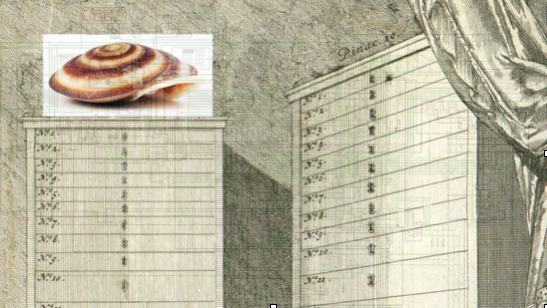
Cabinets of Wonder (Wunderkammern) have been in existence in some form or another for centuries as celebrations of the power of the object, the lure of acquisition, the beginnings of scientific classifications, the proto-museum and a cosmos in miniature. Wunderkammern: The Secret Life of Objects examines the collecting impulse, the categories of acquisitions, the construction of knowledge and what the Wunderkammern, duo bao xiang, tableau quasi-vivants, salon des glaces, thaumata, Box of Ghosts, or Kunstschrank can reveal about the politics and pleasures of production, desire, materiality and memory.
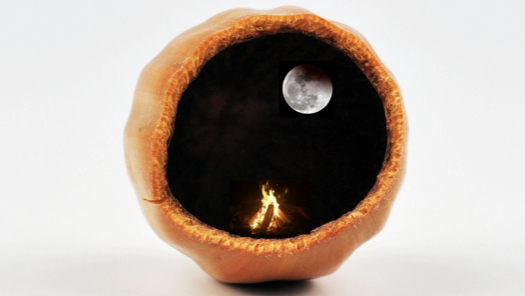
Building on a previous work that dealt with Denis Diderot's encyclopedia, entitled Diderot and the Last Luminare: Waiting For The Enlightenment, and its examination of the promise and archiving of knowledge systems, Wunderkammern investigate the often inorganic categories within which we construct and file away tactile, visual and haptic knowledge for future examination, recall, reuse or erasure. Using a contemporary Cabinet of Wonders under construction since 1959 and currently housed in a private domestic setting Wunderkammern: The Secret Life of Objects examines collecting, acquisition, objects and what a contemporary Wunderkammern might reveal about desire, knowledge, materiality and memory.
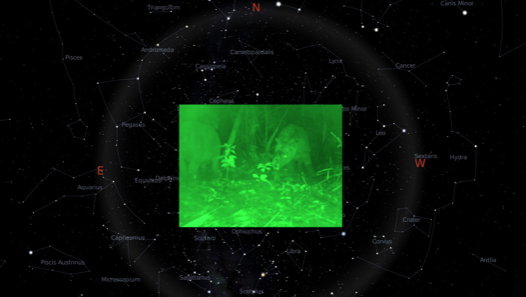
The film leaves no object untouched, no dust mite comfortable and no item unexamined at close range. Organized alphabetically for sanity’s sake the film activates a series of associations arcane, eccentric, playful and expansive. Ever unfolding, yet carefully constructed to facilitate your perusal. Wunderkammern: The Secret Life of Objects takes you on tangents yet to be imagined, springs coils tightly wound, unnerves the inanimate and vitalizes cultural detritus. You will look at the objects that surround you with a newfound appreciation, perspectival acumen and a regained sense of wonder. We invite you to get lost with us.
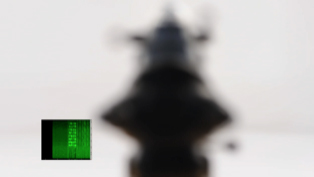
BIOGRAPHIES
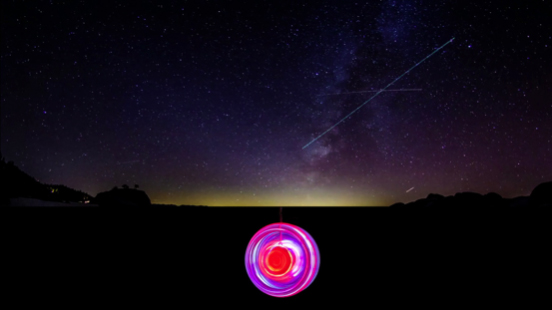
COMPOSER
Eleonor Sandresky's music has been described as beautiful, liberating, witty, and as having ever-varying qualities of touch, register and intensity by critics such as Allan Kozinn and Steve Smith of The New York Times. Her work encompasses the acoustic, the electronic and the multi-media, including music for virtuoso soloists and large ensembles, cabaret, art songs, and evening-length collaborations. Her music has been featured in film at Cannes, among other film festivals, and can be heard on Koch International, One Soul Records, ERM Media’s Masterworks of the New Era series, and Albany Records.
Ms. Sandresky has been a composer-in-residence at STEIM in Amsterdam, at The MacDowell Colony in New England, USA, and at the festival in Hvar, Croatia, among others. Current commissions include a NEW WORK for Parthenia, a consort of viols, and baroque harp based on the poetry of John Dunne, to be premiered in 2014.
Recent work includes The Mary Oliver Songs Book 1 for choreographed pianist playing piano with live electronics, sensor system and video, which she premiered at I-Beam in Brooklyn, NY, and her Suite For String Quartet, premiered by Ethel in NYC. Her music has been heard on three continents, from the Philadelphia Fringe Festival to the Totally Huge New Music Festival in Perth, Australia. She has received grants and commissions from the Lower Manhattan Cultural Council, New York State Council on the Arts, Jerome Foundation, ASCAP, American Music Center, and Meet the Composer.
She is at the same time one of New York’s pre-eminent new music pianists, with performances and premieres of new works by a wide range of composers from Egberto Gismonti to Philip Glass. She has recorded for CRI, Nonesuch, One Soul Records, New World Records, Mode Records, and Orange Mountain Music, and plays concerts throughout the world.
Working at the forefront of avant-garde concert-as-theater, Eleonor has reinvented herself as a Choreographic Pianist with her evening-length composition, A Sleeper’s Notebook, that she premiered at the Kitchen as a part of the Composers Collaborative, Inc Keyboard Summit in 2003. In it she explores her deep interest in how motion translates to emotion through sound, a hyper-emotional experience for the audience and the performer. Michele Branwen of HoustonArts, remarks that “Her vision has a freshness and unusualness that has become rare in the avant-garde scene, and her delivery is captivating and true,” and Steve Smith has this to say in TimeOut NY about the piece, "A Sleeper's Notebook maps in vivid detail a nocturnal terrain in constant flux." Her latest pieces build on these concepts and create them for herself as well as other performers.
As a music director, she has led ensembles in a variety of theatrical settings, from dance performances with Susan Marshall to conducting to film with the Philip Glass Ensemble, of which she was a member from 1991 - 2004. In addition, Eleonor has coached Einstein on the Beach in Berlin presented by a local ensemble, and worked with students in a variety of settings as lecturer, teacher and coach, at both the Houston School for the Arts and the North Carolina School for the Arts, among others.
She is also active as a producer and artistic director, having created events that most recently include Music After, a commemorative marathon concert for the tenth anniversary of 9/11 and West Side Story Film with Live Orchestra that premiered at the Hollywood Bowl in 2011. In 1996, she co-founded Mata, a festival of new music in New York City that celebrates works by young composers from around the world.
She holds two master’s degrees: in composition from Yale School of Music, studying with Martin Bresnick, Jacob Druckman, and Anthony Davis; and in piano performance from the Eastman School of Music studying with Rebecca Penneys, while coaching with Steven Doane, Sylvia Rosenberg and Paul Katz. She also trained at the Banff Centre for the Arts in chamber music with Gyorgy Sebok, Franco Gulli and Aldo Parisot. http://www.esandresky.com/live/
FILMMAKER
Erika Suderburg is a filmmaker and writer. She has written art, performance, television and film criticism over the past thirty years for many publications including Xtra, AfterImage, ArtWeek, Art Issues and The New Art Examiner. She is co-editor with Michael Renov of Resolutions: Contemporary Video Practices, and editor of Space Site Intervention: Situating Installation Art, both published by the University of Minnesota Press. Her book Resolution 3: Global Networks of Video co-edited with Ming-Yuen S. Ma was published in 2013 by the University of Minnesota Press. . Her areas of specialization and interest include: Art theory, Queer Theory, film and television criticism, video, film and digital production and imaging, Installation and Site-Specific art, sound art, film and video history, American and European experimental film and video and the intriguing and entrancing work of Denis Diderot, Gilles Deleuze and Michel De Certeau. She has worked as a curator for The American Film Institute, KCET PBS, Los Angeles, OutFest, Filmex International Film Festival, Los Angeles Contemporary Exhibitions (L.A.C.E.), and The Women’s Building.
Her work has been exhibited in festivals, museums, on television, on the sides of big walls, on a hot air balloon and in galleries including: the Pacific Film Archives-Berkeley, the Millennium Film Workshop-New York, Capp Street Projects-San Francisco, the Museum of Modern Art-New York, The American Film Institute-Los Angeles, the Museum of Contemporary Art-Los Angeles, Kunstlerhaus-Stuttgart, Grazer Kunstverein-Austria, the Collective for Living Cinema-New York, Fukai International Video Biennale-Japan, New Langton Arts-San Francisco, International Video Festival-Bonn, The Long Beach Museum of Art, The American Academy in Rome, Simon Watson Gallery-New York, Trial Balloon Gallery-New York, Mix Mexico-Mexico City, FilmForum-Los Angeles, Cohan & Leslie Gallery-New York, The Getty Museum-Los Angeles, Galerie Jean-Luc & Takako Richard, Paris.
Erika Suderburg’s films have examined the veneer of political language and historical narrative and its interjection into "private life," the friction between the public and private sphere and the images and texts that are constructed in order to label, classify, give witness to and identify the self in relation to societal constructs. In short this work is based in the stories we tell ourselves in order to live and the objects that anchor them. She is interested in devising, simulating, inventing and interrogating the textual and visual narratives we construct in order to mourn, to celebrate, to know, to ignore, and to forget.
Theoretically and formally Suderburg often employ the concept of a model universe or an all-encompassing archive, the creation of sites of material debris; clues, shards, and patterns that leave object traces. Cabinet of Wonders (Wunderkammern) embodies these sites in compact form. The work is based on an ongoing interest in the collecting impulse and consistently employs the miniature to reference these notions of the explicative model or master narrative as a way of exploring our desire to participate in and categorize experience through images and fabricated environments. Several loci reoccur as investigatory catalysts: the natural history museum, photographs and models as memory debris, the ennui of travel narratives, military and national archives, nomadic constructs, theatrical stage sets, landscape as metaphor, and repetitive historical and political amnesia. Wunderkammern: The Secret Life of Objects adds another core sample to this investigative collection.
She began making experimental film and video in 1978 and was fortunate to study with Kinji Akagawa, David Antin, Tom DeBiaso, Michel de Certeau, Ken Feingold, Jean-Pierre Gorin, Allan Kaprow, and Moira Roth. She has made eight feature length films and myriad short films and videos that have been exhibited in Korea, Japan, Greece, Germany, Italy, Switzerland, Canada, France, Singapore, Australia, Mexico, Qatar, China, Holland, Egypt, Sweden, the Netherlands, Brazil, Japan, and the UK. Her work is distributed and published by System Yellow in Los Angeles and V-Tape in Toronto. She has been on the faculties of the California Institute of the Arts, Art Center-Pasadena, the Milton Avery Graduate School of the Arts at Bard College, New York and the Otis-Parsons School of Art & Design in Los Angeles. She is currently a faculty member at the University of California, Riverside located in the Department of Media and Cultural Studies. Information, filmography, clips, installation images and links to all her current projects can be found in updated form at: http://erikasuderburg.com/
*A Note on Versions
A collaboration between Erika Suderburg and composer Eleonor Sandresky, the film is designed to be exhibited with multiple soundtracks including a live performance of the score.
Version 1.0 Designed to be performed live by ensemble.
Version 2.0 Combines a recorded score with additional but discrete soundscapes.
Version 3.0 Recorded score plus eight additional tracks of sound. Not discrete.

|
